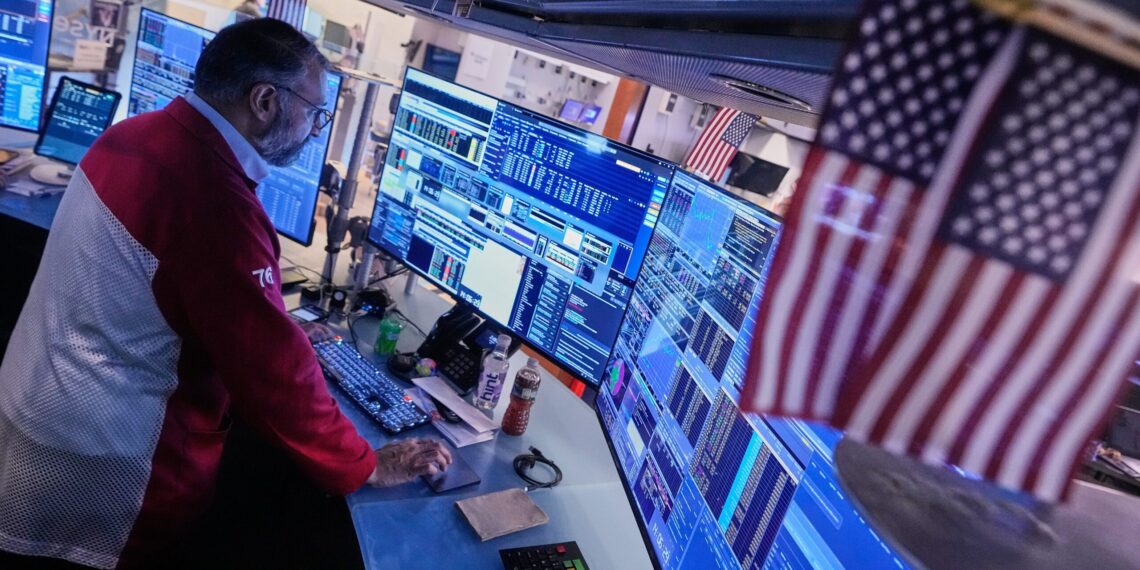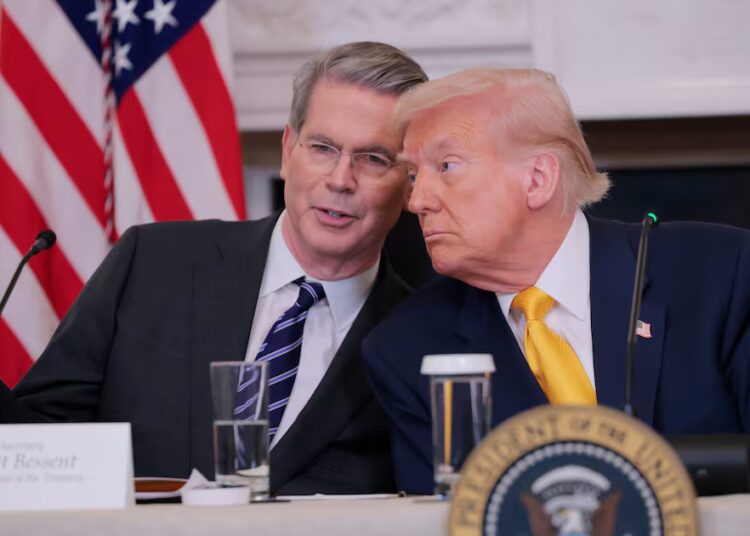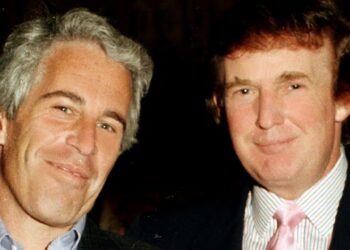Wall Street is getting a lot of what it has long wanted out of Washington, even as some bank executives and market watchers warn that financial markets are overexuberant and potentially combustible.
Regulators installed by President Donald Trump are laying the groundwork to deliver on the banking industry’s wish list, from faster merger approvals to less-onerous rules for financial buffers that protect against losses. While officials dial back the intensity of regulation and the way they apply rules on thousands of banks, some of the biggest names in finance, including the CEOs of Morgan Stanley and Goldman Sachs, are saying that financial markets could be due for a significant correction, as stocks hover near record highs on enthusiasm over artificial intelligence.
Wall Street is getting a lot of what it has long wanted out of Washington, even as some bank executives and market watchers warn that financial markets are overexuberant and potentially combustible.
Regulators installed by President Donald Trump are laying the groundwork to deliver on the banking industry’s wish list, from faster merger approvals to less-onerous rules for financial buffers that protect against losses. While officials dial back the intensity of regulation and the way they apply rules on thousands of banks, some of the biggest names in finance, including the CEOs of Morgan Stanley and Goldman Sachs, are saying that financial markets could be due for a significant correction, as stocks hover near record highs on enthusiasm over artificial intelligence.
Treasury Secretary Scott Bessent has spearheaded the push to relax bank rules, casting deregulation as a cornerstone of Trump’s economic strategy, although Wall Street has long argued for looser rules, saying that regulators clamped down too much after the financial crisis that triggered the Great Recession.
Coming off one of their strongest quarters ever, big banks are poised to benefit from more room to take risks, with less-stringent guardrails and fewer watchdogs to contain them.
“The temptation when times are good, profits are fat and markets are ebullient is to relax financial regulations and to pretend that nothing will ever go wrong in the future. And then when we hit a pothole or get rear-ended, we regret that we disabled the air bags,” said David Wessel, director of the Hutchins Center on Fiscal and Monetary Policy at the Brookings Institution. “… The purpose of regulation and supervision is to prevent a little mishap from becoming a financial crisis that shakes the whole economy.”
The timing of the regulatory easing could be risky, said Fabio Natalucci, chief executive of the Andersen Institute, a think tank. He noted that it comes late in a long bull market in both stocks and credit products, like corporate bonds, where valuations are already high and credit spreads very tight, suggesting investors anticipate low levels of defaults. Deregulation could encourage riskier lending, lower underwriting standards and greater leverage, or borrowed money — “essentially adding extra fuel to the last few innings that are left in the financial cycle,” said Natalucci, who formerly headed financial stability at the International Monetary Fund.
One of the most consequential shifts may come in a highly technical debate over how much debt banks can use to fund their investments and the size of financial buffers that big banks hold to absorb losses. The Federal Reserve and other regulators are planning to ease requirements in ways that could have the effect of increasing the overall amount of debt and lowering the protective cushions in the system. While it remains unclear exactly where officials will land, it’ll be far from the Biden-era effort to essentially do the opposite.
Last week, the Fed also changed the way its supervisors grade the performance of a bank, making it harder for supervisors to deem a bank badly managed, a black eye that can prevent a bank from engaging in mergers or opening new branches. Michael Barr, who served as the Fed’s vice chair for bank supervision during the Biden administration, warned that the new grading system could backfire and reduce incentives for large banks to fix serious management problems.
The Trump administration is also encouraging banks to grow through mergers, speeding up the time it takes for proposed tie-ups to win regulatory approval.
The average time to complete a bank merger fell to about four months this year — the shortest period in at least 35 years — down from a peak of nearly seven months during the Biden administration, according to S&P Global Market Intelligence.
The regulators, too, are pulling back: Last month, Michelle Bowman, a Republican who succeeded Barr as the Fed’s top banking supervisor, said she would shrink the 500-person team in Washington that writes rules for the nation’s largest banks by nearly a third, part of an effort to streamline the day-to-day supervision of big firms.
Big banks have largely welcomed the shift in tone from their regulators. Banks have argued that regulators lacked transparency and spent too much time on matters that don’t go to the heart of whether a bank is safe, or not in danger of failing. It’s reasonable to take stock of the rules put in place since the last crisis to ensure they haven’t had unintended consequences, they say.
“A regulator that is more transparent, efficient and focused on material risks and not check-the-box exercises is a sign of good governance that makes the financial system safer,” said John Court, executive vice president and general counsel of the Bank Policy Institute, a lobbying group that represents big banks.
To be sure, banks face competition from crypto and other firms trying to take consumer deposits and become more deeply embedded in the traditional banking system. The biggest banks have also faced pressure from the Trump administration over allegations they denied conservatives banking services during the Biden administration. JPMorgan Chase and Bank of America have disclosed investigations into “debanking,” which stem from a Trump executive order in August. (The banks deny closing accounts for political reasons.)
But analysts say the overall direction is quite favorable for big banks, boosting their returns. Already, Wall Street’s biggest banks released banner quarterly results in October, posting double-digit profit gains amid rising deal activity and resilient consumer spending. And the coming regulatory changes could lift bank returns by about two percentage points — meaning a 12 percent return could rise to 14 percent, said Mike Mayo, a senior banking analyst at Wells Fargo.
“If this were 2007 and I saw these moves taking place, I’d be saying, ‘What’s going on, this is the wrong time, wrong place,’” Mayo said. “But given the strong foundations of banks and the degree of regulation, this feels more like a swing back toward the middle than anything alarming.”
The easing regulatory moves in the United States come as more financial leaders have been ringing the alarm.
Just last week, the World Economic Forum president warned of bubbles in crypto, artificial intelligence and sovereign debt. The International Monetary Fund last month warned that global markets have grown too complacent about risks — from trade wars and geopolitical tensions to swelling government deficits — leaving overpriced assets vulnerable to a “disorderly” correction.
And even JPMorgan CEO Jamie Dimon, who declared bankers “dancing in the streets” when Trump won, has sounded concerned about potential problems with the economy. After a pair of high-profile bankruptcies in the automotive lending space suggested weaknesses in credit markets, Dimon warned about the possibility of more trouble ahead.
“I probably shouldn’t say this, but when you see one cockroach, there are probably more,” he said on a call last month. “Everyone should be forewarned on this.”
The post Wall Street enjoying best run in years, but ebullience spurs concern
appeared first on Washington Post.




